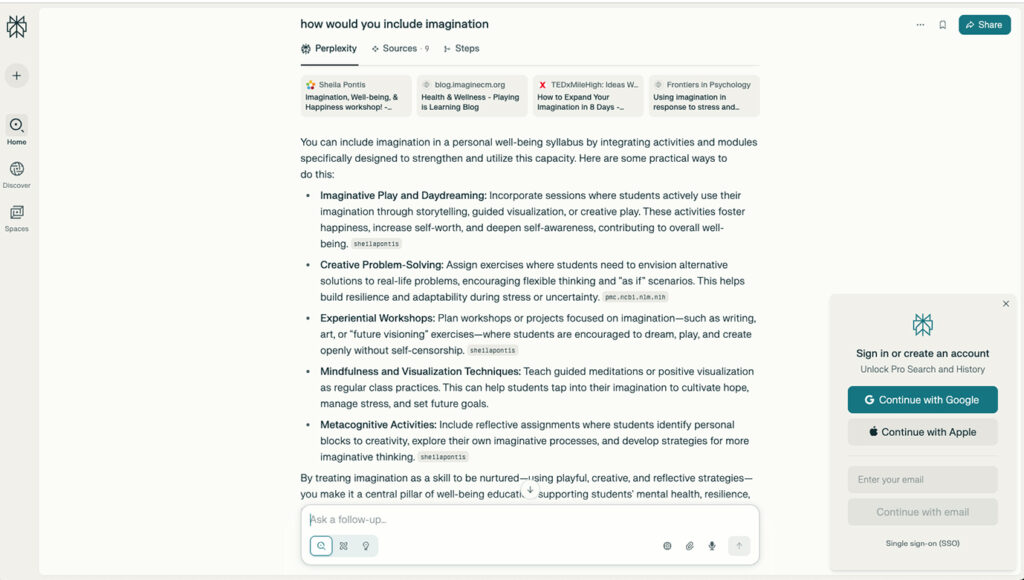
I’m not a huge user of AI – probably I have used it twice in my life (yes, really), but this week I was playing around with Perplexity, the free AI-powered answer engine which claims to provide “accurate, trusted, and real-time answers to any question.” So I decided to explore who was working on the intersection of imagination and emotional well-being, which were the latest articles and papers on the topic, and who I could reach out to engage in related conversations.
To find answers, I asked “how could you integrate imagination in personal well-being.” I was genuinely impressed by the results. As I read them, I first thought “Wow, these ideas are really on point with my line of thinking – it’s great that people are exploring them.” However, to my surprise, when I checked the sources, I realized that the platform was citing content from my latest posts!
Results were both somehow disappointing – I was really looking forward to connecting from other researchers working on similar areas – and eye-opening:
- Could it be that such an important topic is not really being explored at length?
- Could it be that there are not that many other researchers seeking to better understand the impact of imagination on well-being and people’s inner development?
Interest on better defining and understanding emotional well-being, as well as human flourishing, has increased in the last decade. Recently, results from The Global Flourishing Study published at Nature Mental Health and The New York Times brought the topic closer to people’s minds and highlighted the importance of better understanding dimensions involved in emotional well-being. Other studies have looked at the mind-body connection providing evidence of the impact of emotional well-being for physical health. Similarly, a few months ago, the New York Times ran a five-day Creativity Challenge to help people “feel happier, lighter, less stuck” by completing “fun daily activities.”
Unfortunately, most research on well-being is still siloed, conducted by clinical psychologists, positive psychologists, or social and behavioral scientists. Interdisciplinary studies are still both extremely rare and hard to get funding for. Studies looking at emotional well-being from less common disciplinary areas, like imagination and creativity, are even more scarce.
In a present time when embracing human imagination – our superpower – is more needed than ever, it is puzzling that support for research on the topic is so elusive. While it is an honor to be cited as the top source of imagination for emotional well-being, this should be a collaborative effort where people from multiple disciplines work together.
You must be logged in to post a comment.